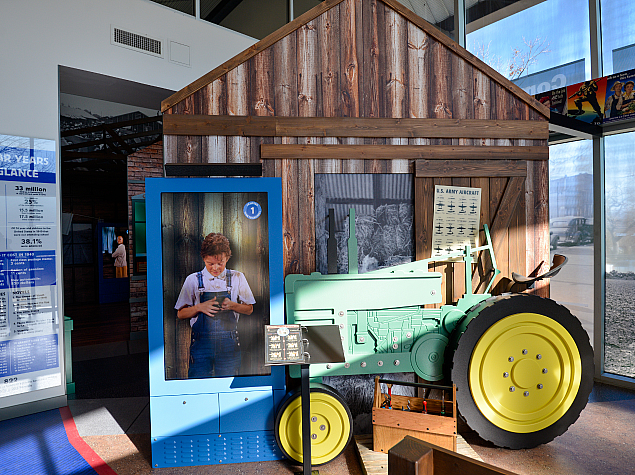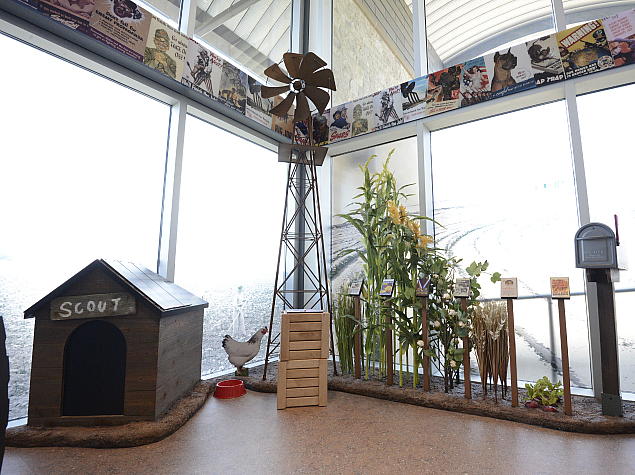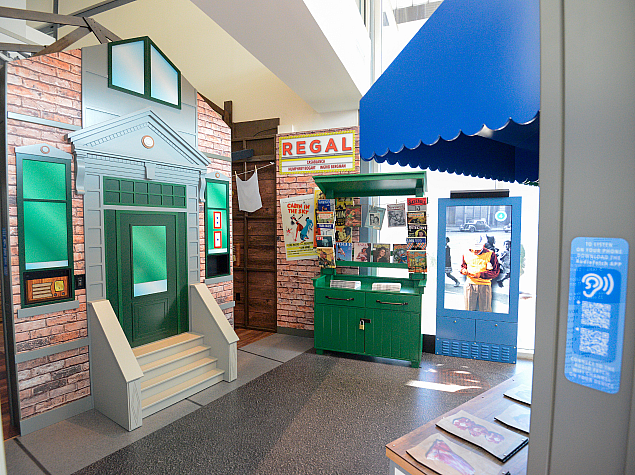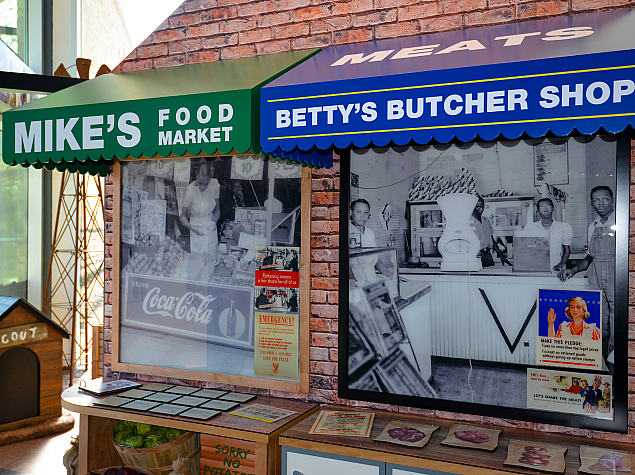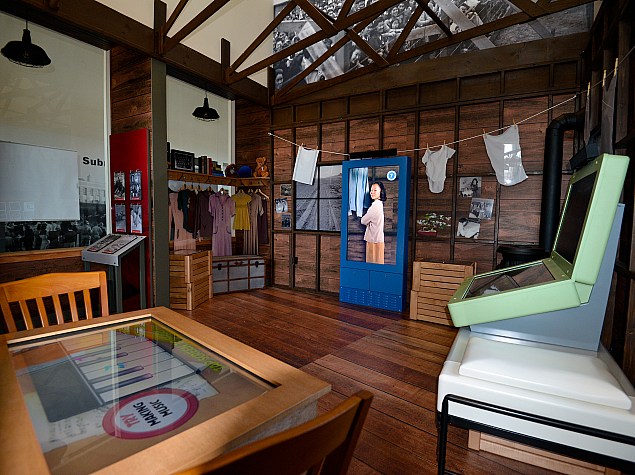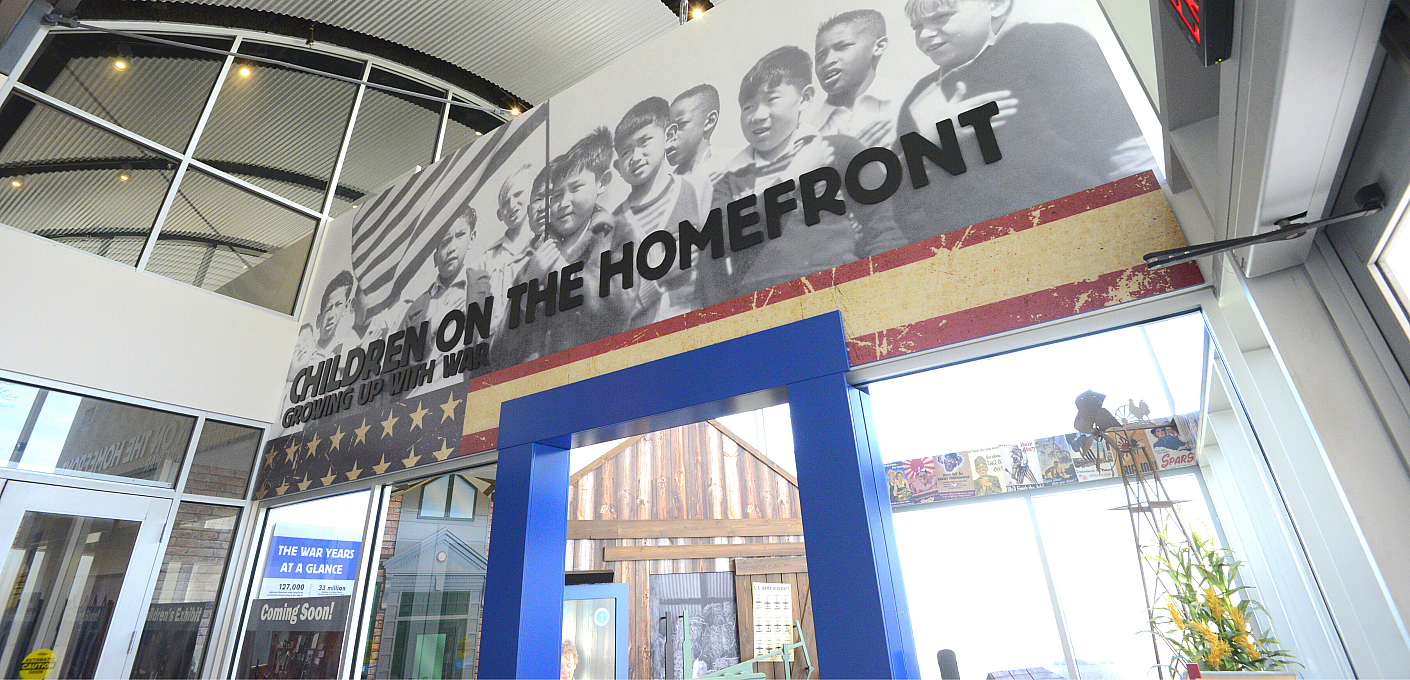
Permanent Exhibit
Children on the Homefront: Growing Up with War
This exhibit is a part of our permanent collection and can be seen with our General Admission tickets.
Overview
The Children's Exhibit depicts World War II on the home front in the United States through the eyes of children. The exhibit area is located near the east entrance of the gallery adjacent to the Plaza of the Presidents. In the exhibit, visitors have opportunities to ponder not only the sacrifices made by children on the home front during the war but also their resilience. Featuring three vignettes - a rural scene, a city scene, and one of an internment camp- visitors get a glimpse of growing up under the cloud of war and a variety of interactive opportunities. The vignettes vary from a cotton farm in Texas to a street in south Chicago, to an internment camp in Wyoming for Japanese Americans. Within each setting, visitors will get a sense of what American children faced on the home front by encountering a virtual child, which serves as an introduction to the space.
Additional Images
Children's Exhibit portrays WWII on the US home front through children's eyes, highlighting sacrifices and resilience.

Thomas
On the farm, meet Thomas, a 12-year-old boy, helping his parents. Thomas’ older brother is fighting overseas with the Marines and his sister has left the farm to build airplanes in the defense industry in Fort Worth. Visitors to the farm venue get a sense of Thomas’ routine on the farm, the sacrifices he has made in donating his dog to the Army, and the sense of loss he has experienced in having his siblings far from home. Also, learn about the various crops raised in America necessary for the war effort.

Walt
Next, is Walt, a 14-year-old black boy growing up in the Bronzeville neighborhood of Chicago. His parents have relocated from Alabama and his older brother is in the Army. Encounter interactives introducing the concept of food rationing. There is also a newsstand in the space designed to illustrate the amount of information available to people in urban settings. A radio playing period programming is also heard from the window of a townhome in this space. There is an opportunity to play video games involving plane spotting and collecting material for a scrap drive, activities in which children engaged during that era.

Mary
Many Americans of Japanese descent were forcibly relocated to internment camps during the war and the third vignette, set in a barracks, examines that experience through the eyes of Mary, a 12-year-old girl from Los Angeles whose family was removed to the Heart Mountain Relocation Center in Wyoming. Encounter a digital interactive designed to elicit critical thinking about what items they would take should they find themselves in Mary’s circumstances. Other digital interactives introduce various activities many young Japanese internees may have enjoyed while interned: receiving instruction about the Japanese language, playing musical instruments, and fashioning garments from scraps. Also in this space be challenged with various questions to ponder about what you would do under circumstances faced by Japanese Americans on the home front during the war.

